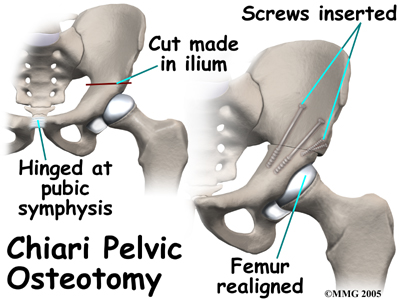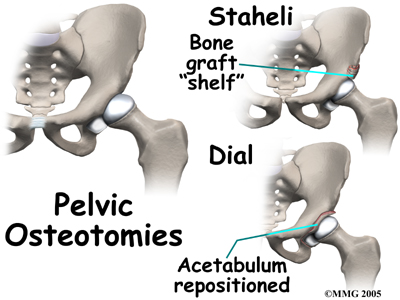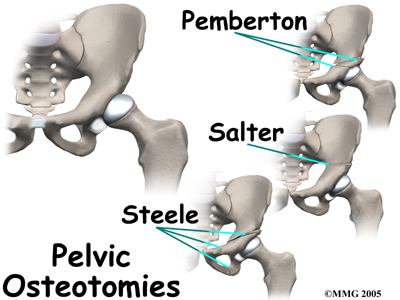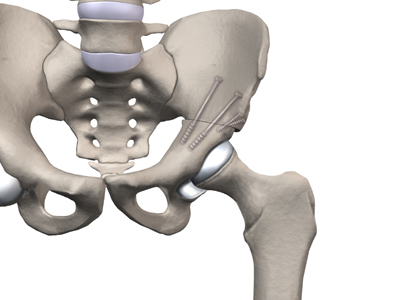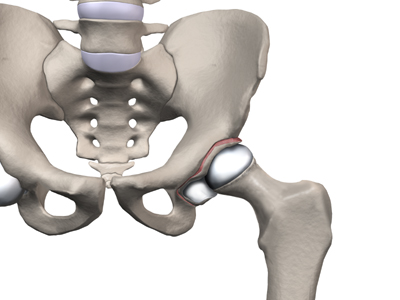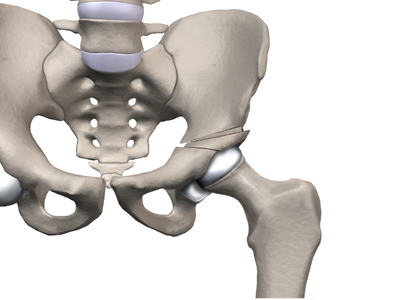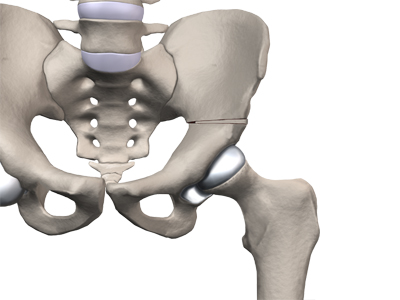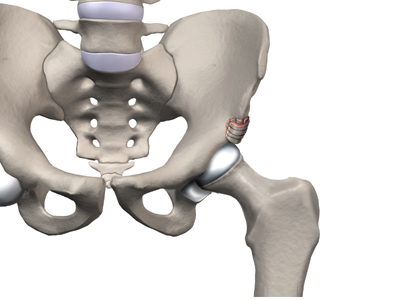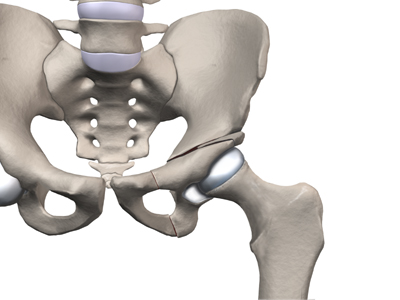What should I expect from treatment?
Following surgery for Perthes disease, physiotherapy treatment at Next Step Physio is very useful in returning your child to their pre-injury activity level as quickly as possible. Physiotherapy can also assist in avoiding other compensatory problems in the back or lower limb in the future as well as to restore and regain any strength and range of motion deficits that have developed as a result of the disease up to this point.
Rehabilitation at Next Step Physio can begin as soon as your child’s surgeon recommends it. Each surgeon will set his or her own specific restrictions based on the child’s individual severity of injury, the surgical procedure used, personal experience, and whether the hip is healing as expected.
If your child is still suffering from any residual pain from the surgical procedure when they come to Next Step Physio for their initial appointment, your physiotherapist may use modalities such as heat, ice, ultrasound, or electrical current to assist with decreasing the pain. If your child is walking with a walker/frame or crutches, your physiotherapist will ensure your child is using the crutches safely and appropriately and that they are abiding by any weight bearing restrictions set by their surgeon. Your physiotherapist will also ensure that your child can safely use the crutches on stairs.
We generally recommend that until it is possible to walk without a significant limp, either a walker or one or two crutches continue to be used. Improper gait can lead to a host of other pains in the knee, hip and back so it is prudent to continue on crutches until near normal walking can be achieved. Your physiotherapist will give advice regarding the appropriate time for your child to be walking without any support at all, although with young children, the ongoing use of a walking aid, even if recommended, can be difficult as they tend to discard them once they can get around without them. Once your child is no longer using any walking aid your physiotherapist will assist with normal gait re-education.
The next part of our treatment at Next Step Physio will focus on normalizing any deficits that may have developed in the range of motion and strength of your child’s lower limbs. Your physiotherapist may assist in stretching your child’s limb or lower back while at the clinic and, if necessary, will ‘mobilize’ the joints of your child. This hands-on technique encourages the stiff joints to move gradually into their normal range of motion. In addition to the hands-on treatment in the clinic we will also prescribe a series of stretching exercises that we will encourage your child to do as part of a regular home exercise program. We will especially focus on maintaining or gaining range of motion in the surgical hip.
Similarly to the range of motion deficits, strength deficits will also be addressed. Strength building exercises particularly for the hip will be taught in the clinic and added to your child’s home program. For older children we may incorporate items such as Theraband or light weights into the exercises to provide additional resistance for the limb. If your child is still young your physiotherapist will explicitly explain how you can work with your child to complete the stretching and strengthening exercises. We will provide ideas for ways that you can incorporate the exercises into your child’s daily play routine.
The final part of our physiotherapy treatment at Next Step Physio will be ensuring that your child’s coordination and balance have returned to normal after their surgery. Following even a short period of walking with crutches or a period where your child is walking abnormally due to pain, your child’s normal balance, coordination, and proprioception (the ability to know where your body is without looking at it) can decline in function. Exercises, which may include balancing on one foot, jumping, and quick agility movements will be encouraged at an appropriate time in line with the surgeon’s restrictions.
Fortunately, gaining lost range of motion, strength, and coordination after surgery for Perthes disease happens quickly. You will notice improvements in your child’s function and gait even after just a few treatments with your physiotherapist at Next Step Physio. If, however, your child’s post-surgical therapy is not progressing as your physiotherapist would expect, we will ask you to follow-up with your surgeon to confirm that the hip is tolerating the rehabilitation well and ensure that there are no post-surgical complications that may be impeding your child’s recovery. Generally your child’s surgeon will follow-up quite regularly anyways to monitor symptoms, check on hip mobility, and to make sure that the condition is not deteriorating, so appropriate progression of rehabilitation is easily monitored as well. The surgeon will also take X-rays during their follow-up visits to determine the healing of the femoral head.
Despite optimal surgical and post-surgical care, patients with Perthes disease are always at higher risk of developing osteoarthritis of the hip. The end result is that most patients with Perthes disease will require an artificial hip at some point in the future. Most patients do not develop problems for 40 years or more. How soon patients have problems with their hip is directly related to how much deformity remains once the condition heals. In general, the more round the femoral hip is at that time of complete healing, the longer the hip will stay free of pain.
Portions of this document copyright MMG, LLC
Next Step Physio provides services for physiotherapy in Edmonton.
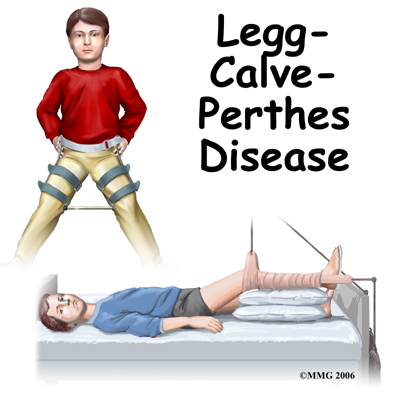 Perthes disease is a condition that affects the hip in children between the ages of four and eight. The condition is also referred to as Legg-Calve-Perthes disease in honor of the three physicians who each separately described the disease. In this condition, the blood supply to the growth center of the hip (the capital femoral epiphysis) is disturbed, causing the bone in this area to die. The blood supply eventually returns, and the bone heals. How the bone heals determines what problems the condition will cause in later life. Perthes disease may affect both hips. In fact, 10 to 12 percent of the time the condition is bilateral (meaning that it affects both hips). This condition can lead to serious problems in the hip joint later in life.
Perthes disease is a condition that affects the hip in children between the ages of four and eight. The condition is also referred to as Legg-Calve-Perthes disease in honor of the three physicians who each separately described the disease. In this condition, the blood supply to the growth center of the hip (the capital femoral epiphysis) is disturbed, causing the bone in this area to die. The blood supply eventually returns, and the bone heals. How the bone heals determines what problems the condition will cause in later life. Perthes disease may affect both hips. In fact, 10 to 12 percent of the time the condition is bilateral (meaning that it affects both hips). This condition can lead to serious problems in the hip joint later in life.

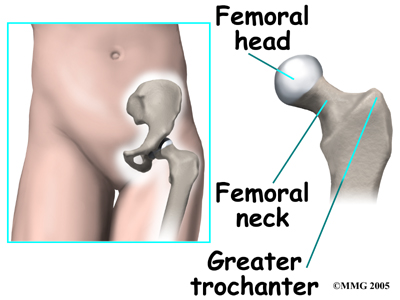
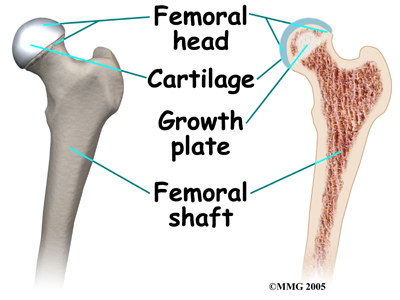
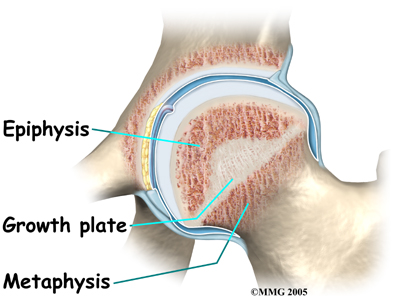
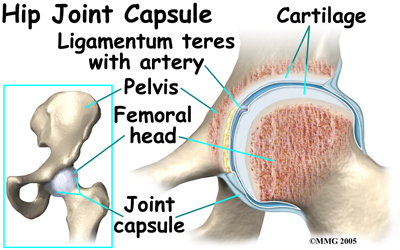
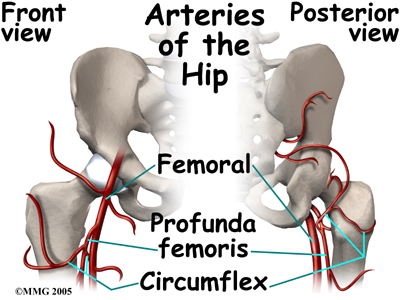
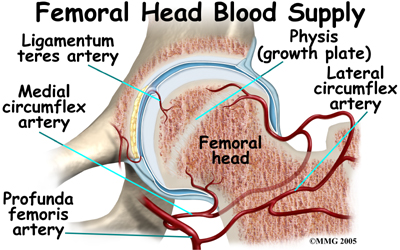
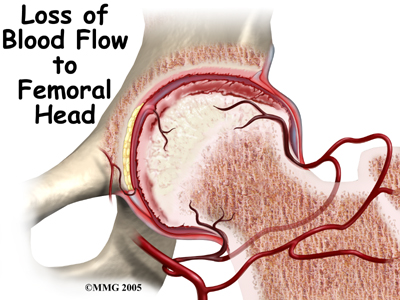 Children who have abnormal blood clotting (a condition called thrombophilia) may also have a higher risk of developing Perthes disease. These children have blood that clots easier and quicker than normal. This may lead to blood clotting that blocks the small arteries going to the femoral head. As a result of new evidence, the certainty of thrombophilia as a cause of Perthes is now under debate. This will remain an area of study until scientists clear up the significance of thrombophilia as a possible cause of Perthes.
Children who have abnormal blood clotting (a condition called thrombophilia) may also have a higher risk of developing Perthes disease. These children have blood that clots easier and quicker than normal. This may lead to blood clotting that blocks the small arteries going to the femoral head. As a result of new evidence, the certainty of thrombophilia as a cause of Perthes is now under debate. This will remain an area of study until scientists clear up the significance of thrombophilia as a possible cause of Perthes.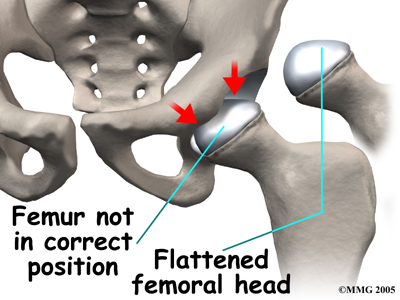 The main problem with Perthes disease is that it changes the structure of the hip joint. How much it affects the way the hip joint works depends on how much the hip joint is deformed. Muscle weakness and atrophy affecting the thigh and calf muscles may develop over time. The affected leg can shorten as a result of the changes in the hip. The result may be a significant leg length difference. Problems later in life are more likely the greater the deformity after the condition has healed.
The main problem with Perthes disease is that it changes the structure of the hip joint. How much it affects the way the hip joint works depends on how much the hip joint is deformed. Muscle weakness and atrophy affecting the thigh and calf muscles may develop over time. The affected leg can shorten as a result of the changes in the hip. The result may be a significant leg length difference. Problems later in life are more likely the greater the deformity after the condition has healed.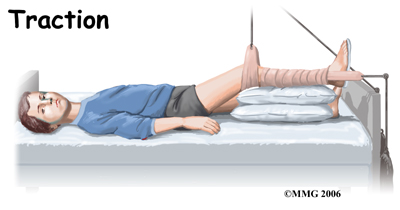
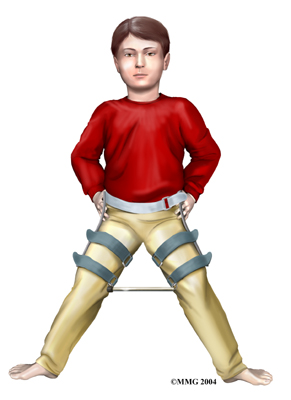 Physiotherapy while in the hospital is used to restore the hip motion as the inflammation comes under control. A physiotherapist will visit your child in their room and assist them with some gentle hip rotation and abduction exercises (taking the leg out to the side.) These exercises will maintain and improve range of motion but will also assist in moving the fluid inside the hip joint, which assists with joint nutrition and is crucial to healing. They will also show you and your child how to continue the exercises independently once your child leaves the hospital if you will be using a home traction unit, and may prescribe further simple exercises that your child should do once they are no longer in traction. Your physiotherapist may even recommend that your child do some exercises in the pool to take advantage of the hydrostatic properties of the water to gain range of motion with less weight bearing impact.
Physiotherapy while in the hospital is used to restore the hip motion as the inflammation comes under control. A physiotherapist will visit your child in their room and assist them with some gentle hip rotation and abduction exercises (taking the leg out to the side.) These exercises will maintain and improve range of motion but will also assist in moving the fluid inside the hip joint, which assists with joint nutrition and is crucial to healing. They will also show you and your child how to continue the exercises independently once your child leaves the hospital if you will be using a home traction unit, and may prescribe further simple exercises that your child should do once they are no longer in traction. Your physiotherapist may even recommend that your child do some exercises in the pool to take advantage of the hydrostatic properties of the water to gain range of motion with less weight bearing impact.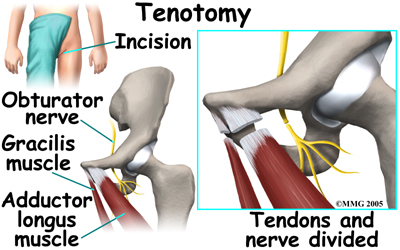 Surgical treatment for containment may be best in older children who are not compliant with brace treatment or where the psychological effects of wearing braces may outweigh the benefits. Surgical containment does not require long-term braces or casts. Once the procedure has been performed and the bones have healed, the child can pursue normal activities as tolerated.
Surgical treatment for containment may be best in older children who are not compliant with brace treatment or where the psychological effects of wearing braces may outweigh the benefits. Surgical containment does not require long-term braces or casts. Once the procedure has been performed and the bones have healed, the child can pursue normal activities as tolerated.


